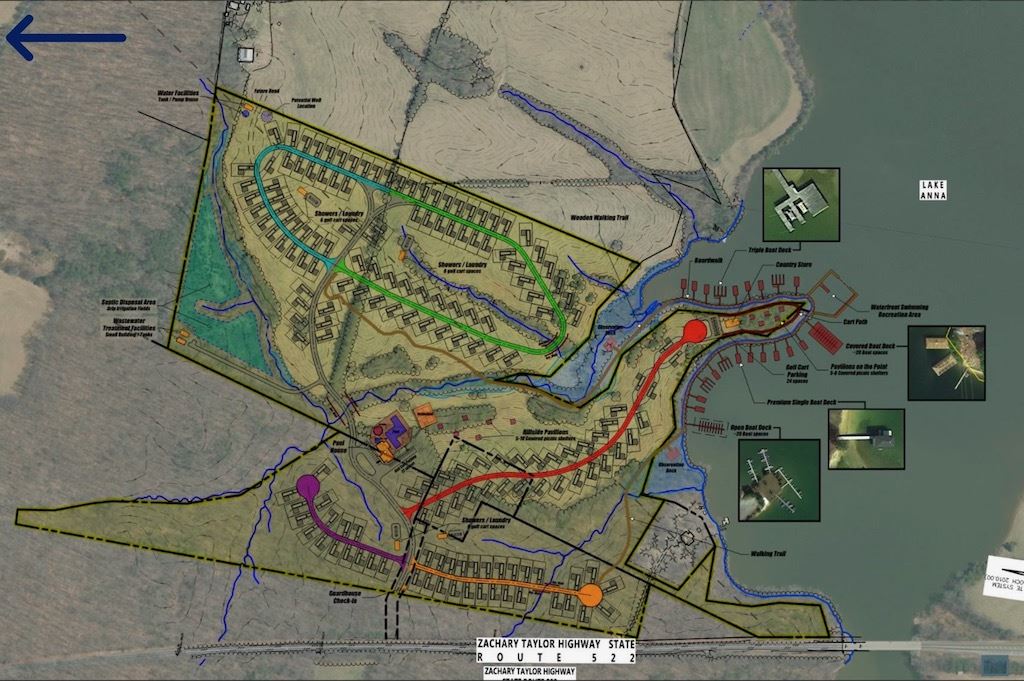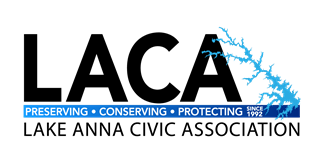By Greg Baker - September 2020
Orange County Resort Update
LACA alerted our membership to the Special Use Permit (SUP) application for the Orange County Resort by both an E-Gram, on our website’s home page and under the land use program section of the website.
The Orange County Planning Commission (OCPC) heard the application at their regular meeting on August 20th, 2020. The OCPC voted to deny the application by a unanimous vote of 5-0.
The original application was ultimately amended and called for daily rentals of 150-175 luxury motorcoaches along with amenities such as fuel sales, a camp store, a marina and up to 150 docks.

LACA had many concerns related to this development that it shared with the OCPC and with our membership. In an “E-Gram: Call to Action” alert to our Region 7 membership, we pointed our members to our list of concerns on our website and urged members to write emails of concerns to the OCPC. This effort led to approximately 80 emails to the commission, of which the majority were from LACA members.
The commissioners took note of these concerns and referenced the issues in their comments to the developer. Some of the highlights from the meeting were as follows:
- One member stated that in his 8 years on the commission, that the application was the worst he had ever seen.
- Several members said the development would be a non-starter without turn lanes off of route 522.
- The members acknowledge the many concerns brought up by citizens including those shared by the Lake Anna Civic Association.
- Gary Griffith, the developer’s representative, requested that the SUP be tabled to allow for the developers to address more of the concerns. However, the chair stated that this option was provided prior to the meeting and that Mr. Griffith had insisted on being heard at the August 20th meeting.
This development straddles the Orange County and Spotsylvania County line. As of this writing, the SUP for Spotsylvania County has not been scheduled to be heard.
Ultimately, LACA believes that the developer will rework their proposal and resubmit a revised plan. We hope that our recommendations will be incorporated into any revisions. We will continue to monitor this development and will keep our membership abreast of any pending meetings or opportunities for feedback.
LAAC Phase One HAB Study Approved
The Lake Anna Advisory Committee, different from LACA, is a quasi-governmental organization established collectively by the three counties surrounding Lake Anna. LAAC is best known for maintaining and approving various regulatory buoys on the lake as well as controlling hydrilla among many other things. Their primary focus is to coordinate lake concerns with Louisa, Spotsylvania and Orange Counties.
LAAC’s Board had the vision to create a three-phase program to understand and ultimately address the Harmful Algae Blooms (HABs) that the lake has suffered through the past three years. Phase 1 is a comprehensive study of the watershed to determine the cause and potential remediation of HABs. Phase one would focus on the North Anna Branch from the upper reaches of the lake to the Holladay Bridge.
The study is robust and includes determining the magnitude of phosphorus and nitrogen loading; both internal and external. It would include mapping of the watershed, mapping of the lake bottom and sediment sampling to determine the existing nutrient loads that have developed over the lake’s 50-year life. You can learn more by reading the Request for Proposal.
Phase 2 of the study would expand on Phase 1 and cover from the Holladay Bridge down to the “splits” (in front of the state park) and back up the lake to include all of the Pamunkey Creek and Terry’s Run sections of the lake. Phase 3 would be the remediation phase to correct the issues that are discovered in Phases 1 & 2.
The cost of Phase 1 will be approximately $50,000. I am happy to announce that the LACA Board voted unanimously to contribute $10,000 towards the cost of this very important first step. Phase 2 will be substantially more expensive and Phase 3 will likely need to be funded by the Virginia General Assembly.
LACA New Board Member Approved
Dick Shrum, the newly reelected Regional Director for region 2, the Cuckoo District tendered his resignation to LACA shortly after the recent LACA elections this summer. Dick has served on the LACA board for many years and we will miss his dedication and the knowledge of the private side that he brought to our board. Dick continues to serve as the treasurer of LAAC. He will be missed.
The board nominated and approved Jean McCormick as his replacement. Jean’s volunteerism on Lake Anna is well known. She is a member of the US Coast Guard Auxiliary and serves as the Chair of LAAC’s Navigation Committee. We are lucky to have Jean representing region 2 and we appreciate her willingness to serve.
Annual Meeting Update
With no end in sight to the coronavirus pandemic, LACA’s board made the decision to postpone our regularly scheduled in-person annual meeting in July. We had hoped to reschedule an in-person meeting later in the year, but the board believes that the best course of action is to host the meeting virtually. The meeting is tentatively scheduled for October 24th and will be hosted using the Zoom platform. More information will be coming in the next few weeks as we coordinate a guest speaker and finalize our agenda. We will post information on our website and send an E-Gram once the plans have been finalized.
